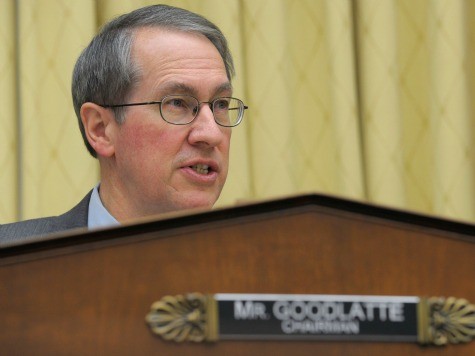
Next week the House Judiciary Committee will begin markup of two pieces of immigration legislation. On Tuesday, the Committee considers the SAFE Act, which would strengthen internal enforcement of existing immigration laws. Following that, the Committee will take up the Ag Act, which reforms the temporary agricultural guestworker program. The two are the first of several bills the Committee will consider to reform immigration.
Rather than consider a single, massive comprehensive bill, like the Senate, Judiciary Chair Rep. Bob Goodlatte has promised individual pieces of legislation reforming each component of our immigration system. “For far too long, the standard operating procedure in Washington has been to rush large pieces of legislation through Congress with little opportunity for elected officials and the American people to scrutinize and understand them,” Goodlatte said in a statement.
“Rather than rush a bill just to ‘find out what’s in it,’ the House Judiciary Committee has instead followed the traditional legislative process of regular order so that we do not repeat the mistakes of the past. Immigration reform is too important and complex to not examine each piece in detail.”
The problem with massive bills like the Schumer-Rubio bill isn’t merely the arduous task of reading all 1,000+ pages. Even if one were to slog through all 1,000 pages, it wouldn’t reveal a lot about the full consequences of the proposal. Legislative language doesn’t exist in vacuum. One needs to understand existing laws to fully appreciate how the legislation would change those laws.
For example, the Schumer-Rubio bill as this bit of language:
Section 240(b) (8 U.S.C. 1229a(b)) is
4 amended–
(1) in paragraph (4)–
(A) by redesignating subparagraphs (B)and (C) as subparagraphs (C) and (D), respec- tively;
(B) in subparagraph (A), by striking ”, at no expense to the Government,”;
What does that mean exactly? Eliminating a provision in current law that seems to limit government’s financial exposure to something seems relevant. One would have to dig deep into the US Code, however, to measure this small amendment’s exact implications.
This little example goes a long way to explaining how much better is the approach taken by Goodlatte and Immigration Subcommittee Chair Trey Gowdy. By considering each aspect of our immigration system in individual bills, Members and the public can digest the full consequences of each proposal. Beyond the boost to transparency, it is simply a more manageable approach to tackling such a significant issue.
The Senate debate on immigration has devolved into vague talking points. It is unlikely more than a handful of Senators will understand all the consequences of the legislation when they cast their vote. Any chance for real reform will have to come from the House.

COMMENTS
Please let us know if you're having issues with commenting.